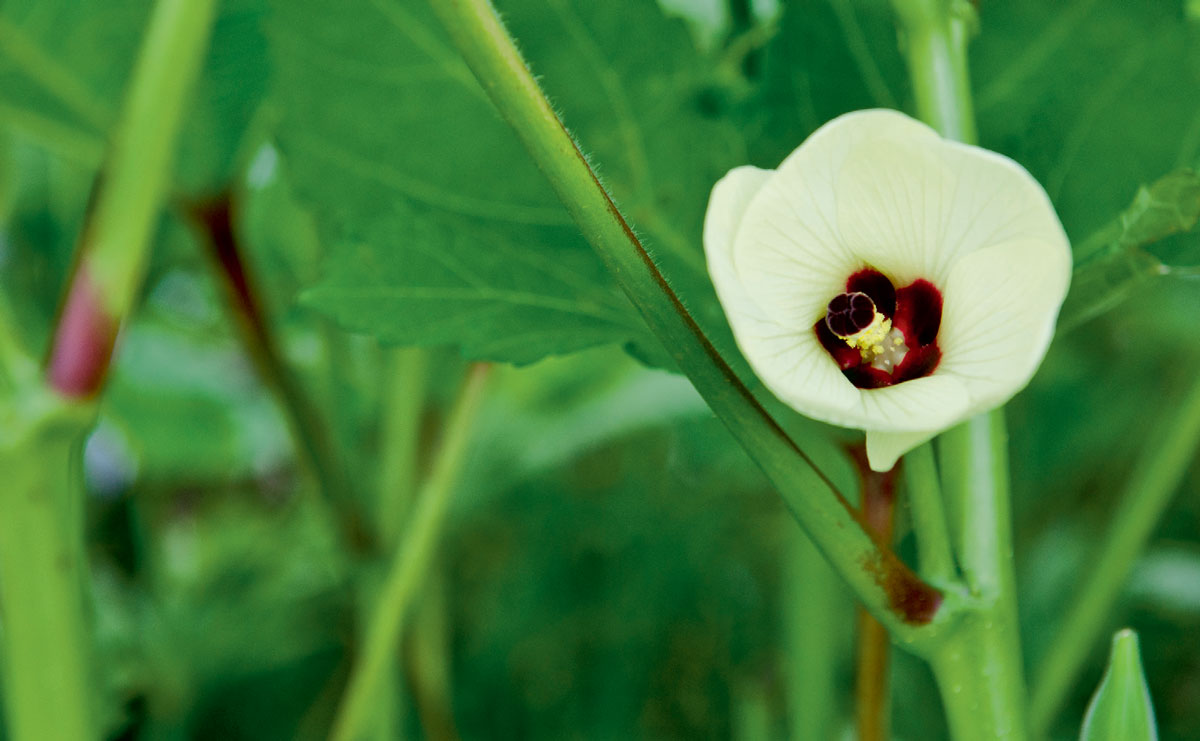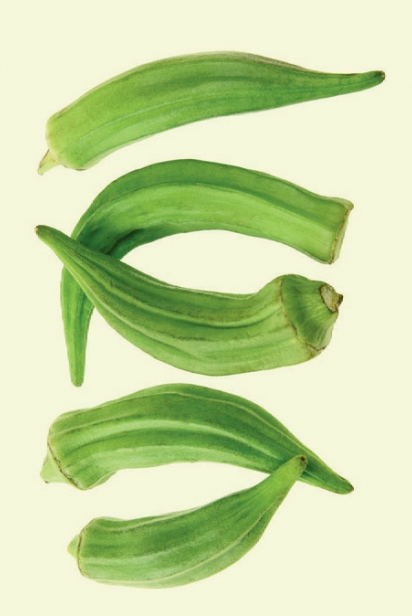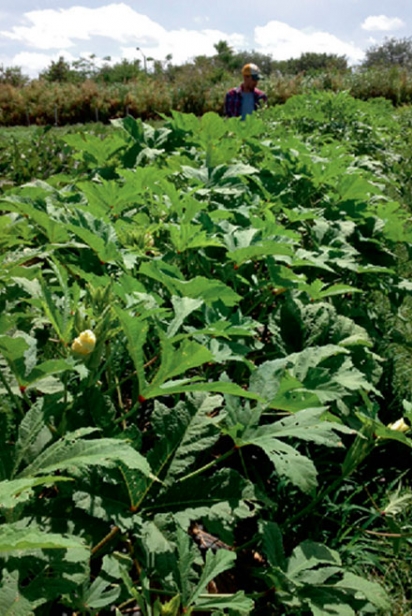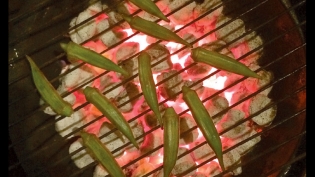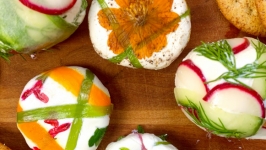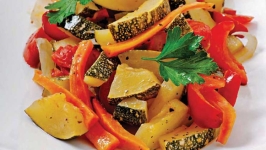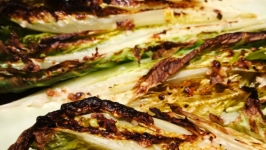Oh, Okra!
Love it or hate it? It’s time to embrace this southern staple, with its beautiful hibiscus–like flowers, growing all summer long in South Florida.
No one seems neutral about okra. Lovers embrace the tender pods in multiple forms: fried, steamed, boiled, grilled, broiled, pickled, whole and sliced. Haters object to okra’s “slime” – the sticky mucilaginous juices inside the pods. While those juices serve a purpose, acting as a thickener in stews, various techniques can eliminate the goo factor – using small, tender, young pods, letting them dry out before cooking them, cooking them quickly over high heat, adding lemon or lime juice while cooking.
A relative of the hibiscus, cotton and hollyhock family, okra (Abelmoschus esculentus) is believed to have originated in northern Africa and was introduced to the Americas in the 1600s. In the deep South, where it thrives in summer heat, okra became an integral part of Southern and Creole cuisine, stewed in gumbos, dusted in cornmeal and fried, and added to succotash. In India and Pakistan, where it’s known as bhindi or ladyfingers, okra gets all spicy and succulent. Brazilians use okra in caruru, the Bahian classic dish that includes shrimp and cashews. Throughout the Caribbean, okra is added to stews and soups. Quimbombó, Cuba’s version of gumbo, might include plantain and pork or beef.Okra is high in fiber and vitamin C, low in calories, and a good source of vitamin A, folate, thiamine and magnesium.
You can find Florida okra in peak supply in July and August in farmers markets and grocery stores. Look for small pods – 2-3 inches long – that are deep green and firm. Avoid longer, older pods that are woody and fibrous. To prepare, cut off the tips and trim the stems. Store wrapped in the refrigerator no more than two or three days. Wash and dry well before using.
If you drive through Homestead and the Redland in the summer, you’ll likely see fields of okra. Look for tall plants with pale yellow flowers and seedpods. You can grow this beautiful vegetable easily in your backyard garden. Plant seeds in full sun or slight shade and make sure to irrigate regularly. Harvest the seedpods with a knife or scissors when they’re still small – about three inches. Freeze whole pods in a sealed zipper bag for later use. Then try these recipes – they’re sure to convert you to a fan.


